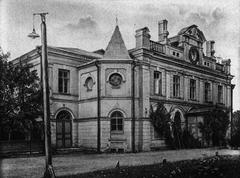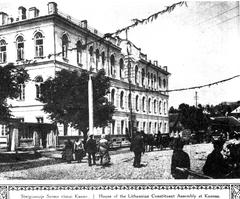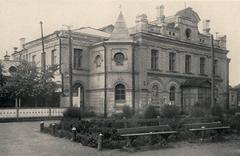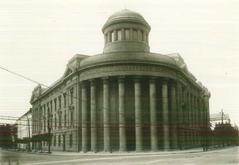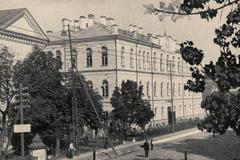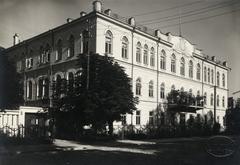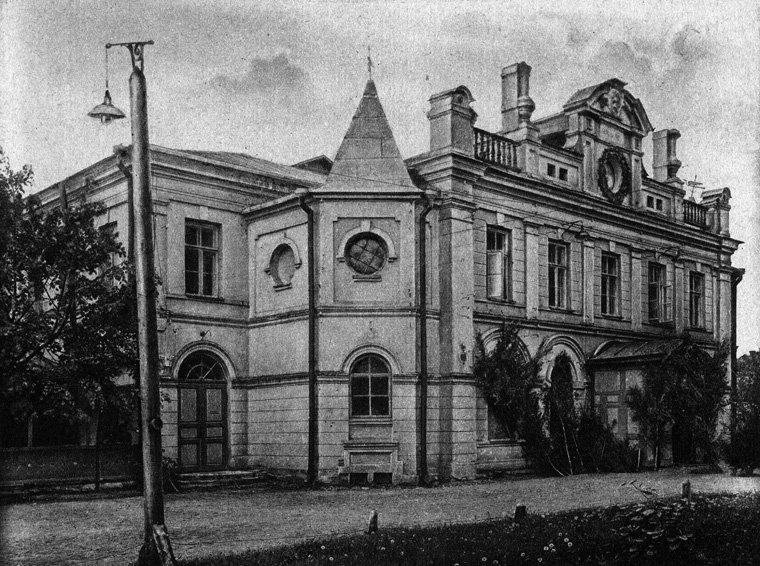
Seimas Palace Visiting Hours, Tickets, and Guide to Vilnius Historical Sites
Date: 14/06/2025
Introduction
Seimas Palace in Vilnius is a living testament to Lithuania’s democratic spirit, national resilience, and architectural evolution. As the seat of the Lithuanian Parliament, it has witnessed pivotal moments from medieval assemblies to the nation’s modern independence. With its modernist design, rich historical narrative, and engaging visitor programs, Seimas Palace is a must-see for anyone interested in Vilnius historical sites. This guide covers Seimas Palace visiting hours, ticketing policies, guided tours, accessibility, and tips for making the most of your visit.
Table of Contents
- Introduction
- Historical Background and Political Significance
- Architectural Vision and Design Philosophy
- Visitor Information
- The Visitor Centre: Civic Education and Public Dialogue
- Educational Activities and Interactive Learning
- Visitor Experience: Atmosphere and Remembrance
- Practical Tips for Visitors
- Special Events and Parliamentary Sessions
- Nearby Educational Attractions
- Frequently Asked Questions (FAQ)
- Conclusion and Next Steps
Historical Background and Political Significance
Origins and Evolution of the Seimas
Lithuania’s parliamentary tradition can be traced to the late Middle Ages, with the first formal Seimas held in 1445, evolving from earlier noble assemblies (Wikipedia). Initially consultative, the Seimas gained legislative powers in the 16th century, culminating in reforms that established it as a representative institution with elected delegates—a significant milestone in European parliamentary development.
The Great Seimas of Vilnius and National Awakening
The late 19th and early 20th centuries saw the rise of Lithuanian national consciousness. The 1905 Great Seimas of Vilnius, enabled by the Russian October Manifesto, demanded Lithuanian autonomy and laid the groundwork for a modern political system (Liquisearch; Zapiski Historyczne).
The Interwar Seimas and the Birth of the Republic
After declaring independence in 1918, Lithuania’s Constituent Assembly established a parliamentary democracy, enshrining freedoms and granting the Seimas broad powers. The interwar period was marked by legislative achievements, diversity, and youthful representation, but also by political instability and martial law (lrs.lt; Zapiski Historyczne).
Soviet Occupation and the Rebirth of the Seimas
Soviet occupation in 1940 interrupted Lithuania’s parliamentary tradition. The current Seimas Palace complex, built during the late Soviet era (1976–1980), became the site of the 1990 Act of the Re-Establishment of the State of Lithuania—making Lithuania the first Soviet republic to declare independence (Wikipedia; lrs.lt).
Political Significance in Contemporary Lithuania
Today, the Seimas is a unicameral body of 141 members, elected through a mixed system. It enacts laws, oversees the executive branch, and safeguards democracy. Its buildings—original parliament hall, main plenary chamber, and committee spaces—reflect both historical continuity and modern function. Memorials outside commemorate the January 1991 events, cementing its place in national memory (Wikipedia; lrs.lt).
Architectural Vision and Design Philosophy
Seimas Palace exemplifies Lithuanian modernism. Designed by the Nasvyčiai brothers, its restrained style emphasizes dignity, clarity, and transparency (Open House Vilnius). The exterior’s clean lines and light-colored façade integrate seamlessly with Vilnius’s urban fabric. Interior spaces are marked by functional layouts, abundant natural light, and minimal ornamentation, focusing on material quality and space for public engagement. Artistic highlights include Kazys Morkūnas’s vibrant stained-glass window, symbolizing the resilience of Lithuanian culture.
The complex includes interconnected buildings for legislative, administrative, and educational functions. The 2019 Visitor Centre addition enhances civic education and public dialogue (Open House Vilnius). Landscaped grounds serve as venues for ceremonies and public events, reinforcing the parliament’s connection with citizens.
Visitor Information
Seimas Visiting Hours
-
Visitor Centre:
- Monday–Thursday: 8:00 a.m.–5:00 p.m.
- Friday: 8:00 a.m.–3:45 p.m.
- Closed on weekends and Lithuanian public holidays.
(Official Seimas Website)
-
Guided Tours:
- Available on working days between 9:00 a.m. and 5:00 p.m. (Fridays until 3:45 p.m.).
- Tours must be booked in advance.
Tickets and Entry
- Admission: Free for all visitors, including guided tours.
- Booking:
- Individual visitors and small groups may visit the Visitor Centre during opening hours without prior registration.
- Groups (10–30 people) must book tours at least two weeks in advance by contacting the Public Relations Unit (Visitor Centre).
- All visitors must pass security screening and present valid photo identification.
Guided Tours
Tours are available in Lithuanian, English, and sometimes Russian or Polish. Tours typically last 60–90 minutes and cover:
- The Seimas Plenary Chamber (modern parliamentary hall)
- Hall of the Act of 11 March (site of the 1990 independence declaration)
- Artistic features (such as stained-glass windows)
- Lobby, conference rooms, and memorials
Tours can be customized for educational groups and may include meetings with members of parliament.
Accessibility
- Wheelchair accessible: Entrances, elevators, and restrooms are fully accessible.
- Assistance: Notify the Visitor Centre in advance for specific needs or to arrange guide/assistance animal access.
- Languages: Tours and educational materials are available in multiple languages upon request.
How to Get There
- Address: Gedimino pr. 53, Vilnius, Lithuania
- Public transport:
- Bus/trolleybus stops: “Seimas” and “Lukiškės”
- Central railway and bus stations: ~2.5 km away (10–15 minutes by taxi or public transport)
- Parking: Limited nearby; public transport is recommended.
Nearby Attractions
- Lukiškės Square
- National Gallery of Art
- Martynas Mažvydas National Library
- Vilnius Old Town
- National Museum of Lithuania (National Museum)
- Museum of Occupations and Freedom Fights (Genocide Museum)
- Centre for Civil Education (Go Vilnius)
Photographic Spots
- Exterior views from Gediminas Avenue
- Hall of the Act of 11 March (during tours)
- Stained-glass windows and lobby (ask for photography guidelines)
The Visitor Centre: Civic Education and Public Dialogue
The Seimas Visitor Centre serves as an educational hub, offering:
- Interactive exhibits on Lithuanian democracy
- Lectures, discussions, and school programs
- Mock legislative sessions and workshops
- Rotating historical exhibitions
Visitors are encouraged to share feedback and participate in program development.
Educational Activities and Interactive Learning
- For Schools: Simulated debates, workshops, and curriculum-aligned tours.
- For the Public: Open lectures, exhibitions, and opportunities to meet parliamentarians.
- For Families: Hands-on activities and child-friendly events.
Visitor Experience: Atmosphere and Remembrance
The palace’s solemn, inspiring environment reflects Lithuania’s fight for freedom and democracy. Memorials outside and within the complex commemorate the events of January 1991 and other key moments in Lithuania’s modern history.
Practical Tips for Visitors
- Best times to visit: Weekday mornings or early afternoons
- Security: Arrive early for security screening; bring photo ID
- Dress code: Smart casual attire recommended
- Photography: Allowed in most public areas; restricted in some chambers—ask your guide
- Facilities: Restrooms, cloakrooms, accessible amenities
- Food/drink: Not available inside; try nearby Gediminas Avenue cafés
Special Events and Parliamentary Sessions
- Public access to parliamentary sessions is available from the gallery (advance registration required)
- Special events (e.g., March 11 Independence Day) may include expanded public access and exhibitions (Seimas Calendar)
Nearby Educational Attractions
Explore the Centre for Civil Education for more on Lithuanian citizenship and democracy; open Tuesday–Friday 9:00–16:00 and weekends 11:00–18:00, free entry.
Frequently Asked Questions (FAQ)
Q: Do I need to buy tickets to visit Seimas Palace?
A: Admission is free, but advance booking is required for guided tours.
Q: Are tours available in English?
A: Yes, English (and sometimes Russian/Polish) tours are available by request.
Q: Can I visit on weekends?
A: The palace is generally closed on weekends; check for special events or exceptions.
Q: Is photography allowed?
A: Photography permitted in most public areas; ask your guide about restrictions.
Q: Is the building accessible for people with disabilities?
A: Yes, with full wheelchair access, elevators, and accessible restrooms.
Q: How do I get there by public transport?
A: Use bus/trolleybus stops “Seimas” or “Lukiškės”; see Go Vilnius for details.
Conclusion and Next Steps
Seimas Palace stands at the intersection of Lithuanian history, democracy, and modern architecture. With free entry, informative guided tours, and a comprehensive visitor centre, it’s ideal for tourists, families, and students. Plan your visit around official Seimas Palace visiting hours, book tours in advance, and enrich your experience by exploring Vilnius’s nearby historical and educational sites. Stay informed about special events and educational resources by following the Seimas on social media and consider downloading the Audiala app for exclusive audio guides and updates.
For booking and up-to-date information:
- Website: https://www.lrs.lt/sip/portal.show?p_r=35403&p_k=2
- Email: [email protected]
- Phone: +370 5 239 6000
Plan ahead and enjoy your journey through Lithuania’s vibrant democratic legacy!
